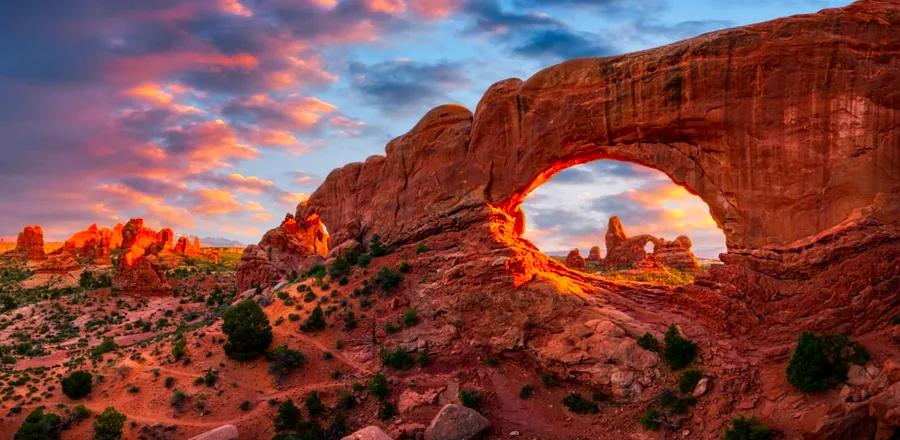15,000 kilometers by boat, train, car, and on foot: A journey powered by caffeine through Indonesia

Even after more than two decades of exploring Indonesia, I still find it difficult to fully grasp the immense scale and variety of the world’s largest archipelago.
My latest book, 'Kopi Dulu: Caffeine-fueled Travels through Indonesia,' chronicles a 15,000-kilometer journey across the country by road, rail, boat, and foot, through what is often called 'the world’s most invisible country.'
Indonesia is the world’s fourth most populous nation, home to around 10% of the world’s languages, yet many people would have a hard time locating it on a map.
'Kopi dulu' means 'coffee first' in Bahasa Indonesia, the unifying language for most of the population. To me, the phrase encapsulates the relaxed and welcoming attitude that defines the countless cultures found in this part of the Pacific's 'Ring of Fire.'
Whether Muslim, Hindu, Christian, or animist, it seems that nothing in Indonesia happens without a preliminary 'cup of Java.' This was perfectly fine with me, as I quickly learned not to rush during my travels here; 'jam karet' (rubber time) is a common phrase that serves as a refreshing antidote to our overly scheduled Western lifestyle.
Where myth and reality intertwine seamlessly
I first set foot in Indonesia in 1995, leading an expedition through central Borneo. Since then, I’ve traveled to nearly every major island, exploring over 100 of the lesser-known islands and some of the roughly 12,000 uninhabited islands still listed on official maps today.
While some may argue that there are no truly unexplored places left, Indonesia offers an adventure unlike any other. My journey took me to most of the country’s famed tourist destinations (such as Borobudur Temple, the Batak Highlands, and Komodo) as well as to less-visited spots that, despite receiving few international visitors, have become almost legendary (like Krakatoa, the Spice Islands of Maluku, and Borneo).

In regions where myth and reality often blend together, I conversed with Tana Toraja’s 'living dead,' encountered trance dancers in Bali, and met villagers in the Komodo archipelago who are literally surrounded by dragons.
I rode the legendary waves at G-Land, Nias, and Occy’s Left, and even pioneered a previously unsurfed break in the remote Alor Archipelago.
I ventured into the forests of Sumatra in search of orangutans and tracked tigers, while conversing with locals across the islands about the myriad of mythical creatures, spirits, and hantu (ghosts) that seem to inhabit every corner of this captivating archipelago.
Indonesia’s iconic phinisi cruisers
Island-hopping across Indonesia's vast archipelago of 13,466 islands, traveling by boat was, of course, a frequent necessity.
The southeast coast of Sulawesi is still home to the Bugis people, an ethnic group once notorious for their feared pirates. According to legend, these pirates are said to have inspired the term 'boogeyman,' which has haunted children's nightmares for generations.
Today, the Bugis, along with their close relatives, the Konjo people, continue to build the impressive Sulawesi schooners known as phinisi.
These iconic tall ships, once used in daring monsoon raids, now play a vital role in tourism, connecting travelers to some of Indonesia's most remote islands. Indo Yachts, the leading provider of traditional liveaboard cruises, operates 22 of the country’s finest phinisi vessels.
For many, these phinisi represent the only practical way to access Indonesia’s far-flung islands, offering a unique form of tourism that benefits isolated communities while minimizing its environmental impact.
There’s an undeniable allure in sailing through a series of tropical islands, with the wind in your sails and your feet resting on a warm teak deck.

I journeyed through parts of the Ring of Fire aboard Lamima, a 65-meter luxury phinisi, the largest traditional Sulawesi schooner ever constructed, though I often sailed in far more basic conditions as well.
Among my experiences were sailing on a traditional fishing boat to explore the Komodo Islands and spending six days on a cargo boat, where I strung up my hammock in the hold as we journeyed up Kapuas River, the longest river in Indonesia at 1,143 kilometers.
Over the past two decades, I’ve taken the riverboat journey into the heart of Borneo three times, coming to regard the Kapuas as Indonesia’s very own Amazon.
A journey off the beaten path.
Despite the impact of large-scale logging and oil palm plantations, the rainforests beyond Putussibau, a jungle town, remain one of the planet's last great jungle adventures. With guides from the mystical Da’an Dayak tribe, known for their rumored powers as mystics and sorcerers, I navigated dugout canoes into uncharted valleys at the heart of Borneo in search of the last remaining rhinos of Kalimantan.

Indonesia ranks as the second most biodiverse country in the world, right after Brazil, and is home to more mammal species than any other nation on Earth.
From the bustling wildlife markets of North Sulawesi to the tiger reserves of Sumatra and the marine sanctuaries of Wakatobi, I was constantly reminded that nearly a quarter of Indonesia’s 667 mammal species are classified as “threatened.”
By the time I reached the farthest eastern reaches of the Far East – at the end of a trek near the border with Papua New Guinea – I had traveled the equivalent of a road trip from Seattle to Tierra del Fuego, or from Paris to Bangkok.
Thanks to the warm hospitality I received in every community, I was far from feeling exhausted, however.
In fact, I wished I could have bent 'rubber time' upon itself... so I could have set out again to experience the journey all over once more.
‘Kopi Dulu: Caffeine-Fueled Travels through Indonesia’, published by Penguin Random House SEA, is available in print at https://amzn.to/3qDY5Uo, or as an e-book at https://amzn.to/3DlyiYX

1

2

3

4

5
Evaluation :
5/5